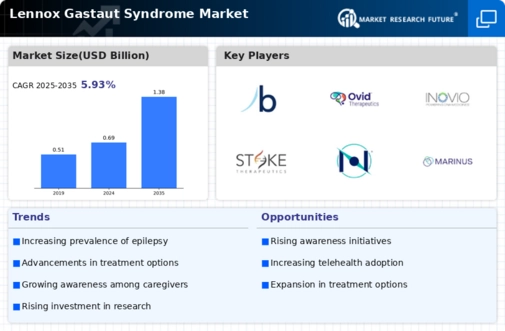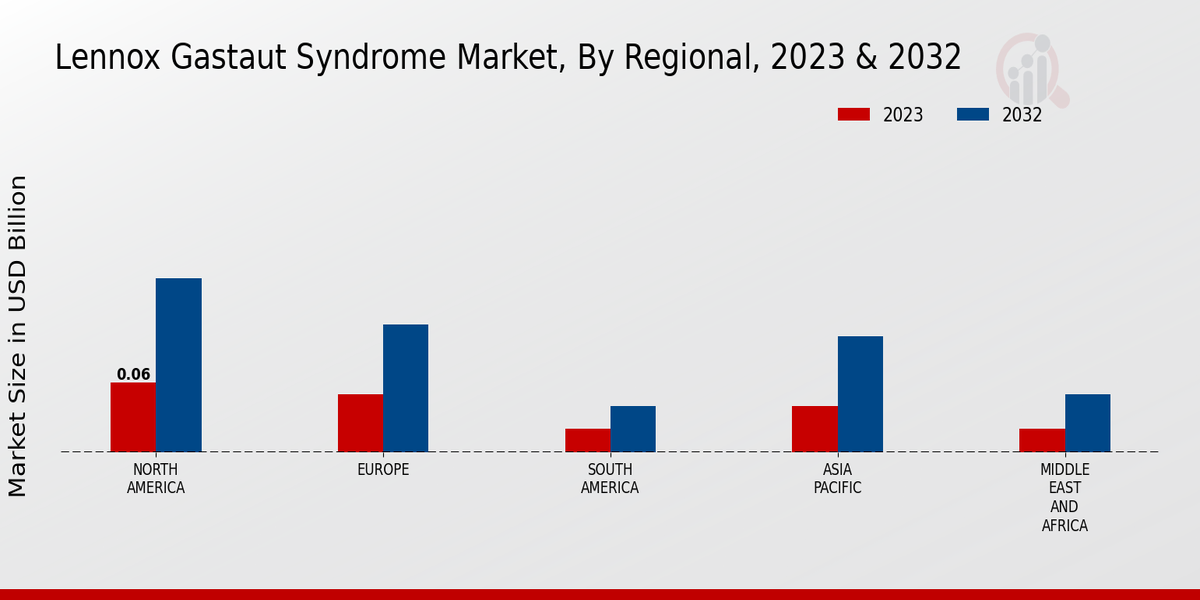Market Growth Projections
The Global Lennox Gastaut Syndrome Market Industry is projected to experience substantial growth over the coming years. With an estimated market size of 0.69 USD Billion in 2024, it is expected to reach 1.38 USD Billion by 2035. This growth trajectory suggests a compound annual growth rate of 6.5% from 2025 to 2035, indicating a robust demand for effective treatments and management strategies for Lennox Gastaut Syndrome. The increasing prevalence of the condition, coupled with advancements in treatment options, is likely to drive this market expansion.
Advancements in Treatment Modalities
Innovations in treatment modalities are significantly influencing the Global Lennox Gastaut Syndrome Market Industry. The development of new antiepileptic drugs and therapies, including cannabidiol-based treatments, has shown promise in managing seizures associated with this syndrome. These advancements not only improve patient outcomes but also enhance the quality of life for those affected. As more effective treatments become available, the market is expected to grow, with projections indicating a rise to 1.38 USD Billion by 2035. This growth underscores the importance of ongoing research and development in the field of epilepsy treatment.
Regulatory Support for New Therapies
Regulatory support for new therapies is a key driver in the Global Lennox Gastaut Syndrome Market Industry. Regulatory bodies are increasingly recognizing the need for expedited approval processes for innovative treatments that address unmet medical needs. This supportive environment encourages pharmaceutical companies to invest in the development of new medications and therapies for Lennox Gastaut Syndrome. As a result, the market is poised for growth, with projections indicating a potential increase in market size as new therapies gain approval and enter the market.
Growing Awareness and Education Initiatives
Growing awareness and education initiatives regarding Lennox Gastaut Syndrome are pivotal for the Global Lennox Gastaut Syndrome Market Industry. Increased efforts by healthcare organizations to educate both medical professionals and the public about this condition are leading to earlier diagnosis and treatment. Campaigns aimed at raising awareness about the symptoms and challenges faced by patients are crucial. This heightened awareness is likely to result in more patients seeking medical attention, thereby driving market growth. As a consequence, the industry is expected to expand significantly, reflecting the need for comprehensive care solutions.
Rising Prevalence of Lennox Gastaut Syndrome
The Global Lennox Gastaut Syndrome Market Industry is experiencing growth due to the increasing prevalence of this severe form of epilepsy. It is estimated that Lennox Gastaut Syndrome affects approximately 1 to 5 per 100,000 children globally. This rising incidence is prompting healthcare providers to seek effective treatment options, thereby expanding the market. As awareness grows, more patients are being diagnosed, which is likely to drive demand for therapeutic interventions. The market is projected to reach 0.69 USD Billion in 2024, reflecting the urgent need for innovative solutions to manage this complex condition.
Increased Investment in Research and Development
The Global Lennox Gastaut Syndrome Market Industry is benefiting from increased investment in research and development. Governments and private organizations are allocating substantial funds to explore new therapeutic approaches and improve existing treatments. This financial commitment is crucial for advancing clinical trials and bringing innovative therapies to market. As a result, the industry is likely to witness a compound annual growth rate of 6.5% from 2025 to 2035. Such investments not only foster innovation but also enhance the overall understanding of Lennox Gastaut Syndrome, paving the way for more effective management strategies.









